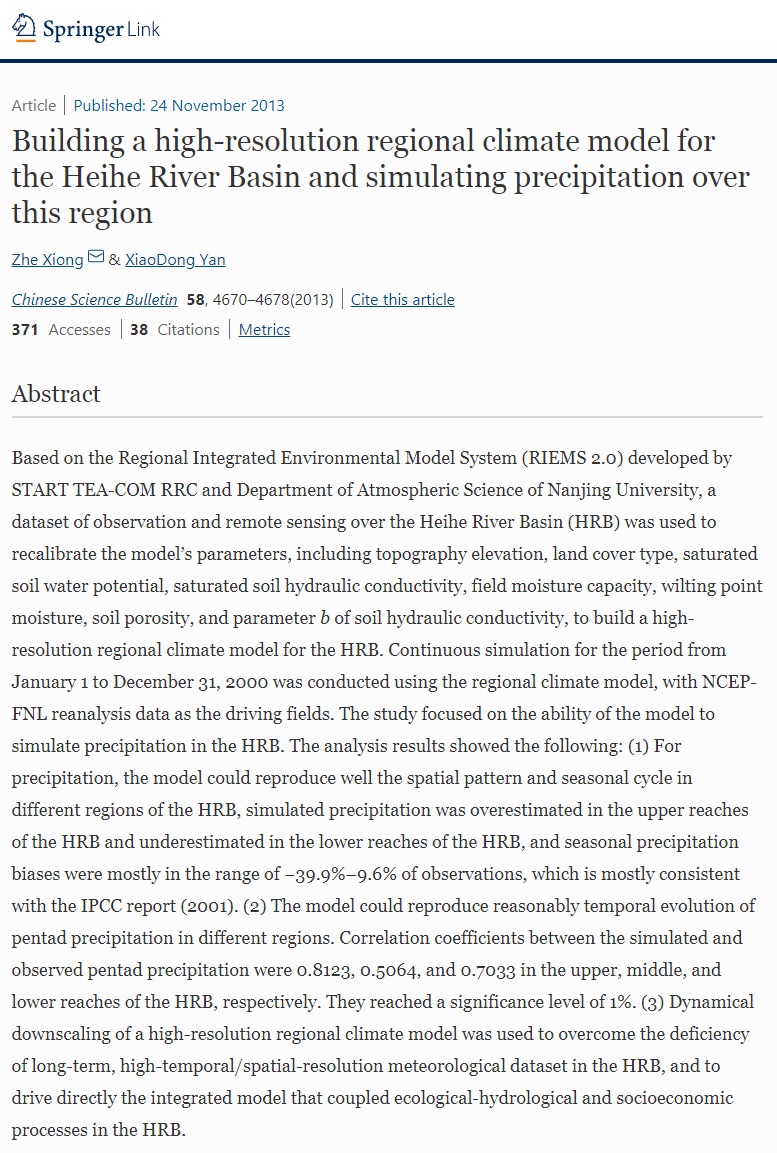
Based on the Regional Integrated Environmental Model System (RIEMS 2.0) developed by START TEA-COM RRC and Department of Atmospheric Science of Nanjing University, a dataset of observation and remote sensing over the Heihe River Basin (HRB) was used to recalibrate the model’s parameters, including topography elevation, land cover type, saturated soil water potential, saturated soil hydraulic conductivity, field moisture capacity, wilting point moisture, soil porosity, and parameter b of soil hydraulic conductivity, to build a high-resolution regional climate model for the HRB. Continuous simulation for the period from January 1 to December 31, 2000 was conducted using the regional climate model, with NCEP-FNL reanalysis data as the driving fields. The study focused on the ability of the model to simulate precipitation in the HRB. The analysis results showed the following: (1) For precipitation, the model could reproduce well the spatial pattern and seasonal cycle in different regions of the HRB, simulated precipitation was overestimated in the upper reaches of the HRB and underestimated in the lower reaches of the HRB, and seasonal precipitation biases were mostly in the range of −39.9%–9.6% of observations, which is mostly consistent with the IPCC report (2001). (2) The model could reproduce reasonably temporal evolution of pentad precipitation in different regions. Correlation coefficients between the simulated and observed pentad precipitation were 0.8123, 0.5064, and 0.7033 in the upper, middle, and lower reaches of the HRB, respectively. They reached a significance level of 1%. (3) Dynamical downscaling of a high-resolution regional climate model was used to overcome the deficiency of long-term, high-temporal/spatial-resolution meteorological dataset in the HRB, and to drive directly the integrated model that coupled ecological-hydrological and socioeconomic processes in the HRB.